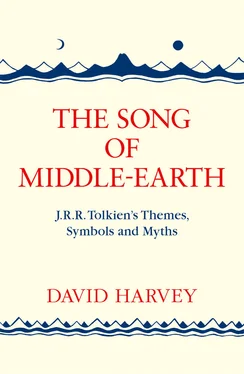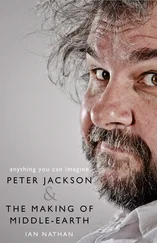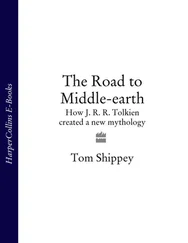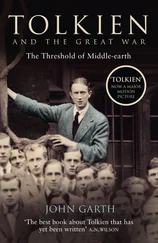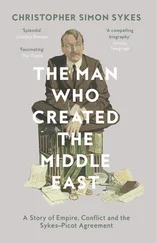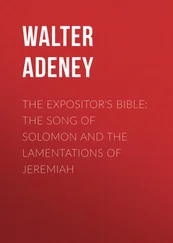Later, his name changed to Ælfwine (‘Elf-friend’), the mariner became an Englishman of the ‘Anglo-Saxon period’ of English history, who sailed west over sea to Tol Eressëa – he sailed from England out into the Atlantic Ocean; and from this later conception comes the very remarkable story of Ælfwine of England, which will be given at the end of the Lost Tales . But in the earliest conception he was not an Englishman of England: England in the sense of the land of the English did not yet exist; for the cardinal fact (made quite explicit in extant notes) of this conception is that the Elvish Isle to which Eriol came was England – that is to say, Tol Eressëa would become England, the land of the English, at the end of the story. 2
Apart from the very method of tale-telling, the major themes that I have examined in The Silmarillion are present, as one would expect, in Lost Tales. Certainly some major changes in plot as well as changes in matters of detail have occurred. But this too is consistent with the development of myth. The tales of myth are never constant, and there is no one ‘authorised version’ (even the Bible has its Apocrypha). Rather, as I note later, the tale-tellers vary, refine and embellish. But the constant ingredient is the basic theme, and certainly the themes that Tolkien propounds and illustrates do not change.
The Silmarillion, Lost Tales and, to a degree, Unfinished Tales set the stage for the drama at the end of the Third Age recounted in The Hobbit and The Lord of the Rings. The mythology is complete and the questions that have been bedevilling readers for the last forty or fifty years may now finally be answered. But I believe that the main inspiration for the questions and the curiosity that readers have for Middle-earth lies deep in the realms of myth. Because the Middle-earth saga was conceived as a mythology the reader, perhaps only subconsciously, recognises myth as the sound of a far-distant trumpet echoing through the mind. Can the reader, perhaps, recognise within his own experience the desire for a subcreated realm of faerie that is as meaningful to him or her as were the great tales that rang through the rafters of the mead halls of early England and the Viking lands, or which were majestically and sonorously intoned by Homer sitting by the tale-fire on an evening in ancient Greece? Perhaps that ‘desire for dragons’ that we all have is now realised in Tolkien’s created mythology for England.
ACKNOWLEDGEMENTS
A number of people have played a part in the realisation of this book. Some of them are not aware of the influence that they have given but it behoves me to take this opportunity to thank them, and acknowledge their support and assistance.
First, I must thank my late father for all things but, more especially as far as this book is concerned, for providing me with the necessary finance to purchase a trilogy of books by a then little-known Oxford don twenty-three years ago – after not a little boyish cajoling – and also for his encouragement, for as long as I can remember, in the study, understanding and love of the glories of English literature and the majesty of the English language. No greater legacy could he have left.
I must also thank former magistri David Canning, Dick Sibson and Den Burton, graduates of Oxford all. One of them, I know, sat at the feet of Tolkien. They provided some of the signposts for the road that I have travelled. Also I must thank Max Cryer for his patience and kind understanding and unflagging assistance at the time of trial by interrogation.
My gratitude must also go to Rayner Unwin, whose advice during the writing of this book and whose encouragement, comments and patience with a new traveller on the road to writing have been of invaluable assistance.
There are many writers whom I have never met who have written reams on the subject of myth and mythology. They helped to clarify the questions and provided leads to the answers. But of all the writers I must acknowledge the one whose works this book examines. J. R. R. Tolkien has provided me with reading enjoyment for the last twenty-three years and his work was the inspiration for this book.
Finally I must pay tribute to the limitless patience, co-operation and understanding of my wife who really must wonder what she started when she suggested I enter Mastermind in 1980. Her help in all phases of this work has been invaluable.
CHAPTER 1
A Question of Mythology
There is a feature common to all human cultures and that is the creation and use of myth. Cultures such as those of Central America and Polynesia did not develop the skill of writing, or the basic technology of the wheel. Yet both these cultures, and many others that lacked similar attributes, had as richly developed a mythology as the civilisations of the Mediterranean, India, Persia and north-western Europe.
C. S. Lewis said to Tolkien that ‘myths are lies’. In one respect he may have been right. Certainly the cosmogonic myths cannot be anything but the hypotheses offered by primitive cultures to explain their own presence and purpose. But the development of myths and their use in societies both primitive and modern is of such importance that to dismiss them as the products of an overactive imagination is to denigrate man’s curiosity and his quest for the answers to the eternal questions, ‘Why am I here?’; ‘Where am I going?’; ‘Where did I come from?’; ‘What lies at the end of the road?’
In our twentieth-century world myths and mythologies seem rather remote. In the technological age they represent a primitive past – a past that goes before recorded history. Myths to the historian are tales that are unsubstantiated by fact or evidence. Yet they may be based on fact. They may have their foundation in some actual historic occurrence that was not (or could not be) recorded. However, the passage of time and the raconteur’s ability for embellishment have submerged or even obliterated what historical facts there may have been. It is valid to suppose that at some stage in history the Greeks came into conflict with a civilisation in Asia Minor that had its centre in Troy. The historical detail of that conflict is lost. What remains is Homer’s account of it. The historical fact has become myth. The intervention of the deities explains the ebb and flow of the fortunes of the participants. Even so, Homer’s account is a mere fragment of the total history of the conflict and really is the tale, as Robert Graves has entitled his retelling, of the anger of Achilles.
The mythologising of historical events, or the explanation of historical events in a mythological context has continued into the age of recorded history. Aeneas becomes the forefather of the Latin races who founded Rome. That there may have been a Romulus is possible. But his origins and activities that led to the founding of the Roman community on the banks of the Tiber have become the subject of myth. A similar situation takes place with the actions of folk heroes. As time passes the hero grows beyond his immediate community and becomes representative of an ethic or attribute of a nation or a country. St Patrick casts snakes out of Ireland. Robin Hood embodies an individualistic nobility of spirit that was not possessed by the nobility of the time, and also serves as the focus for the feelings of frustration on the part of a disenchanted community. Coeur de Lion becomes the embodiment of the noble warrior king to both Englishmen and Saracen and by the latter was named Melech-Ric and was used to frighten the young Islamic children of the day. Arthur and Barbarossa are the founders of nations, who will come again when the land is beset. Even such an historical figure as Richard III has achieved a mythical stature, mainly as a result of the writings of the Tudor apologists Sir Thomas More, Shakespeare and more recently A. L. Rowse, as the embodiment of evil in search of power, and the archetypal wicked uncle, although the latter symbol has been common through myth, folktale and history, to the displeasure, no doubt, of a multitude of benevolent uncles.
Читать дальше
